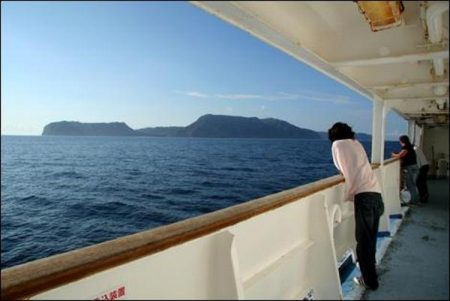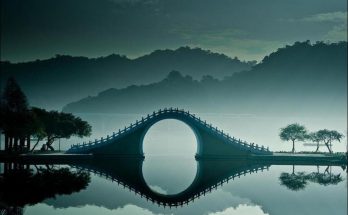The Japanese islands lie toward the northern end of the long line of Island Arcs that rim the eastern margins of the Asiatic continent. They form a relatively small environment situated between the largest land mass and the largest ocean. The lands of Japan are mostly uplands, the tops of steep and rugged mountains projecting above, with most of the mountainous mass lying below, the present sea level.
In earlier human time the level of the ocean was slightly lower, and Japan then was a larger region of land grouped into a small number of islands fringed by considerable areas of relatively broad and open lowlands, particularly in what today is the Inland Sea and the coastal shelf toward Korea and China.
The rise of the ocean level in post-glacial times has subdivided Japan into many islands, and has taken away from modern man a significant area of lowland. Today one tends to think of Japan as a very small country made up of steep surfaces, but it really is small only in terms of the amount of its arable land in relation to its large population. The earliest Japan known to man was neither so small in actual area, nor was it small relative to need and population. The smallness is clearly relative even today, for Japan stretches some 1,200 miles from northeast to southwest.
The Japanese islands form a mosaic of small individual units, blocks, peninsulas, and islands, broken by fault and fracture lines, grouped into a number of major units, and littered with the products of volcanism. There are a number of structural depressions between these major units, and one of the largest of them is occupied by the Inland Sea, in itself a very real part of the Japanese environment. Maximum elevations reach 12,000 feet, and the steep uplands dominate this environment. In many places steep rocky coasts drop directly into the sea.
Scattered around the fringes of islands and between some of the less deep structural depressions are small lowland patches, alluvial areas filled with coarse to fine sediments, which provide agricultural surfaces. Many coastal sections show uplifted marine terraces and benches, for some of the areas of Japan have been above sea level only in Recent geologic time.
These areas provide additional relatively smooth and open areas which have been put to agricultural use, though many of them are of comparatively low value. Much of the volcanism has produced acid materials which weather into poor soils, though volcanism has provided many beautiful and scenic landforms.
The south-facing portions of southwestern Japan possess mild climatic regimes and some subtropical plants, whereas the north coast, the southern uplands, and all northern Japan is cold and snowy in the winter and possesses mixed and coniferous forests. These conditions are amenable to occupance and use by modern man, but for early man they presented a somewhat difficult set of conditions.
Natural food supplies are not abundant for a population of limited technology, and living conditions were on the rigorous side. The best regions were the coastal fringes in which early man could combine the use of land and aquatic resources, but the range of possibilities was far less in the Japanese environment than in the more varied regions of southeastern Asia.
Visits: 66



